A Slow ‘No Fly’ Journey from Switzerland to the Lofoten Islands, Norway!
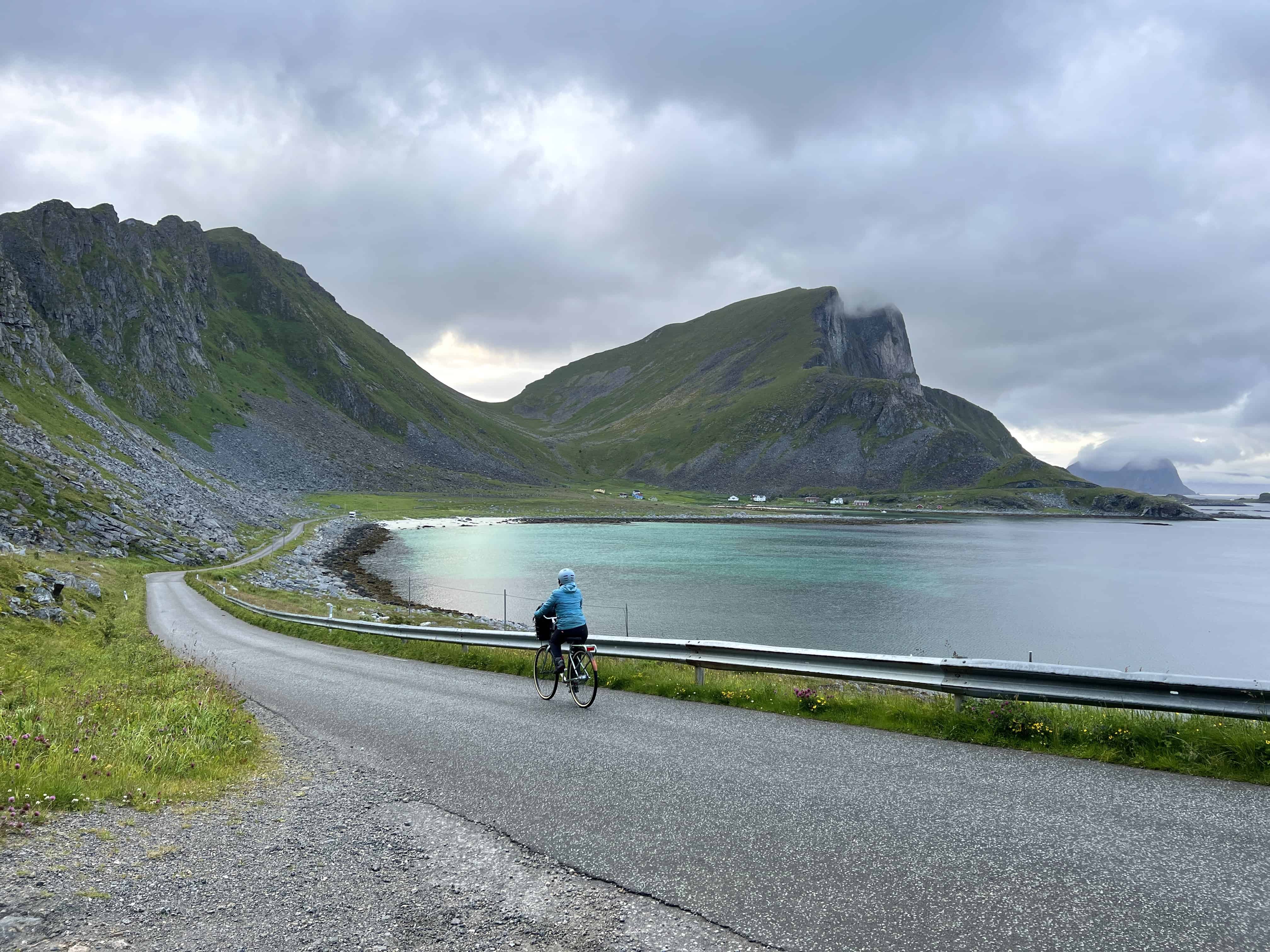
I had never really harbored dreams of travelling to the Arctic region. It sounded fascinating, of course, but also far, remote and fragile. Could I really justify flying all the way – and burning all those emissions – to experience it?
But after a week of self-guided e-biking across the Swiss Alps last summer, I was hooked to the idea of using low carbon alternatives to reach some of the farthest reaches in Europe – the Lofoten Islands in the Norwegian Arctic.
We hatched up a crazy plan, to spend a month travelling from Switzerland to the Lofoten Islands and back, using only public transport – trains, buses and a public ferry!
Also read: The Epic Land Journey from Thailand to India via Myanmar
The journey from Switzerland to the Lofoten Islands
An attempt to avoid the carbon emissions of flying within Europe turned into one crazy adventure. We travelled a total of 8000+ kilometers and spent 74.5 hours on trains, plus a few more on ferries.
The Eurail Global Pass, which covers train journeys and some bus travel across the Schengen region, allowed us to slow transit through 5 countries. We travelled through Switzerland, spent a couple of days in a hectic Hamburg, whiled away a week each in the hip cities of Oslo and Stockholm (on the return journey), transited through a heat wave-stricken Copenhagen, journeyed along the North Sea, and crossed the Arctic Circle. An incredible diversity of landscapes kept us company all along, from the high Alpine peaks in Switzerland to the awe-inspiring fjords of Norway!
Along the way, we experienced Europe’s fastest train, the TGV, which felt like gliding in a dream. But we also ran into overbooked, elbow-to-elbow crowded trains in Hamburg, under renovation train lines in Sweden and Norway, delayed connections in Copenhagen, and dated regional trains across Europe.
Also read: Responsible Travel Tips for Meaningful Experiences on the Road
Midnight sun on the Lofoten Islands
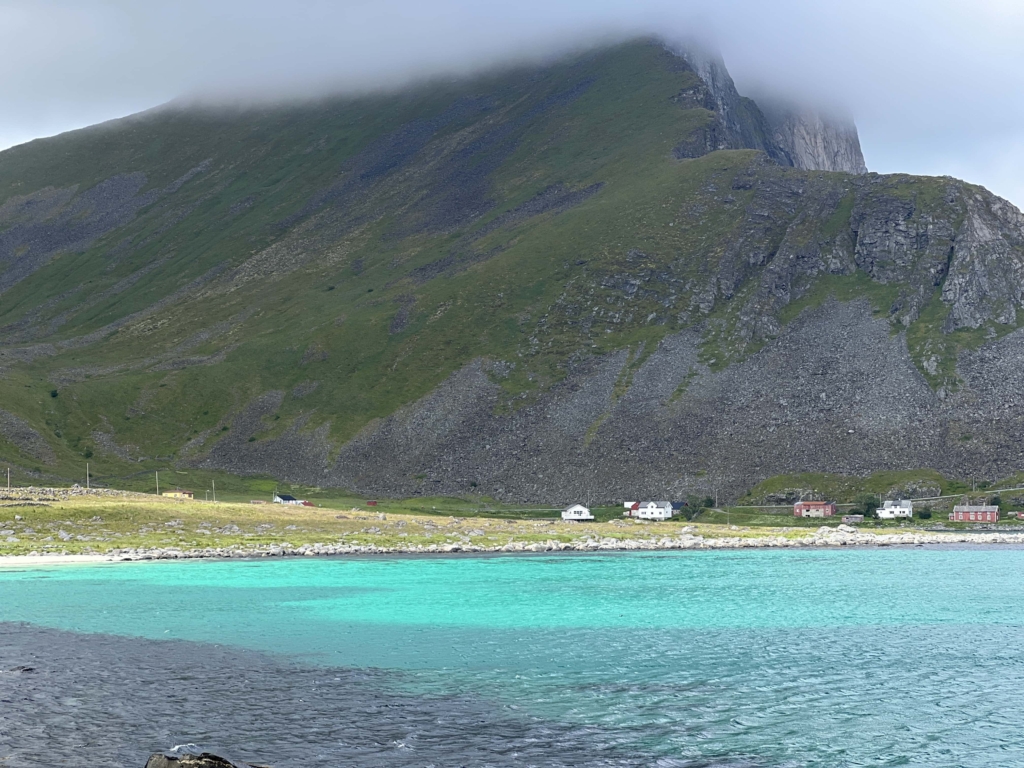
By the time we arrived at the end of the Norwegian train line in Bodø, I felt thrilled and exhausted in equal measures. I could never have imagined though, what lay ahead, on the public ferry ride and the northernmost region of our planet.
A few hundred kilometers out into the North Sea, dramatic cliffs rose up from the water, and isolated islands lay sprawled across the sea, populated with sparse, colorful Arctic settlements. On the island of Værøy (population: 800), in one such settlement, one colorful abode was our Airbnb – a cozy studio at the base of a towering cliff, overlooking the incredible blues of the North Sea!
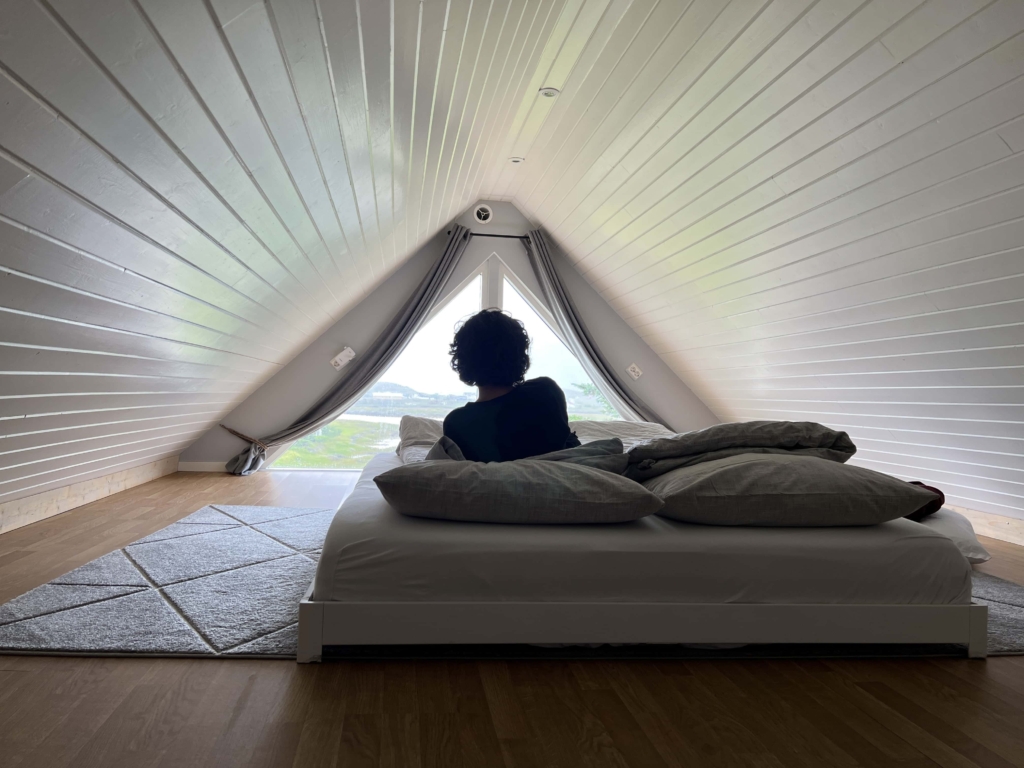
Our host quickly initiated us into life on this Lofoten Island – the hiking trails, the fascinating history, the cycling routes, the one eatery, the one pub, and one supermarket with remarkably abundant shelves despite the remoteness, a reminder of our travels through one of the richest countries on Earth. Over the next few days, we cycled and hiked in the surreal magic of ’24 hour sunlight’ days, confused about when to sleep and eat with no sunset or sunrise to guide us! It was summer after all, and the sun never sets this far out in the Arctic.
Thanks to our host, we received after-hours access to the local pub, got insider tips on a hiking trail to an abandoned fishing village, learnt how climate change is impacting this remote settlement (more on that soon), and became part of this small Arctic community for a while.
Also read: Do we Need to Reconsider Our Flying Guilt?
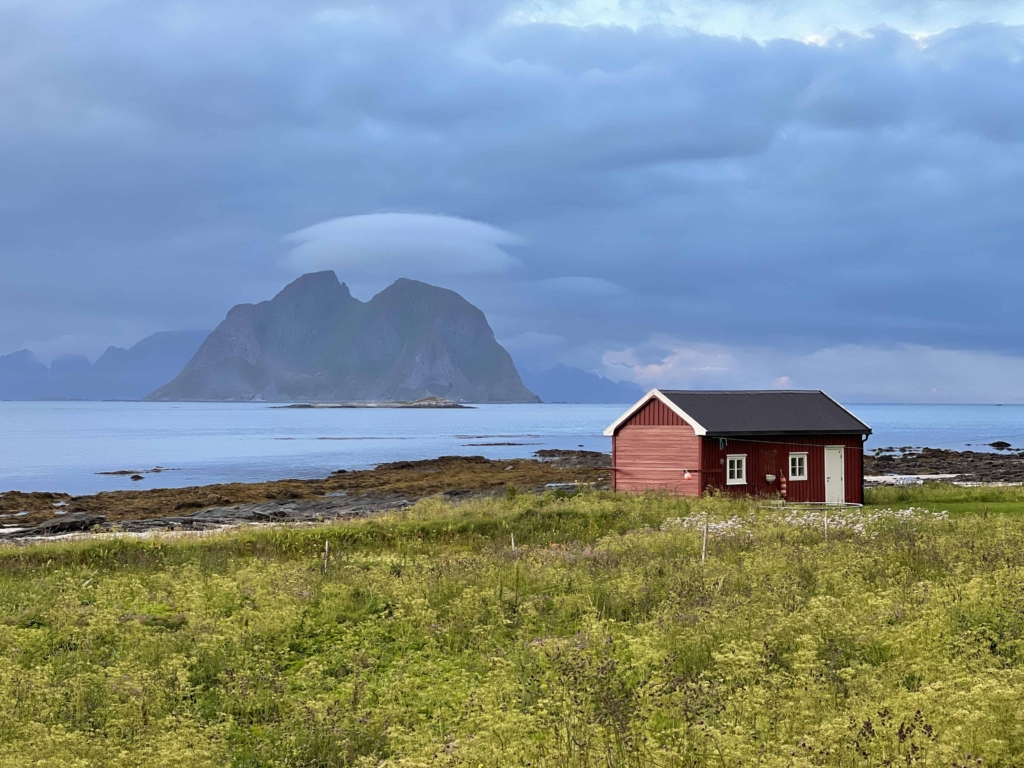
Our time on the island reminded me of all the reasons I love travelling – to witness Earth’s wild beauty and connect with people I couldn’t otherwise have known. And even though making it there without flying was long, expensive and tiring, I can’t imagine doing it any other way.
Lofoten Islands: Quick Travel Tips
Where are the Lofoten Islands?
The Lofoten Islands are an archipelago, located north of the Arctic Circle in Norway. It comprises of 5 big islands, and several smaller ones, home to remote Arctic communities.
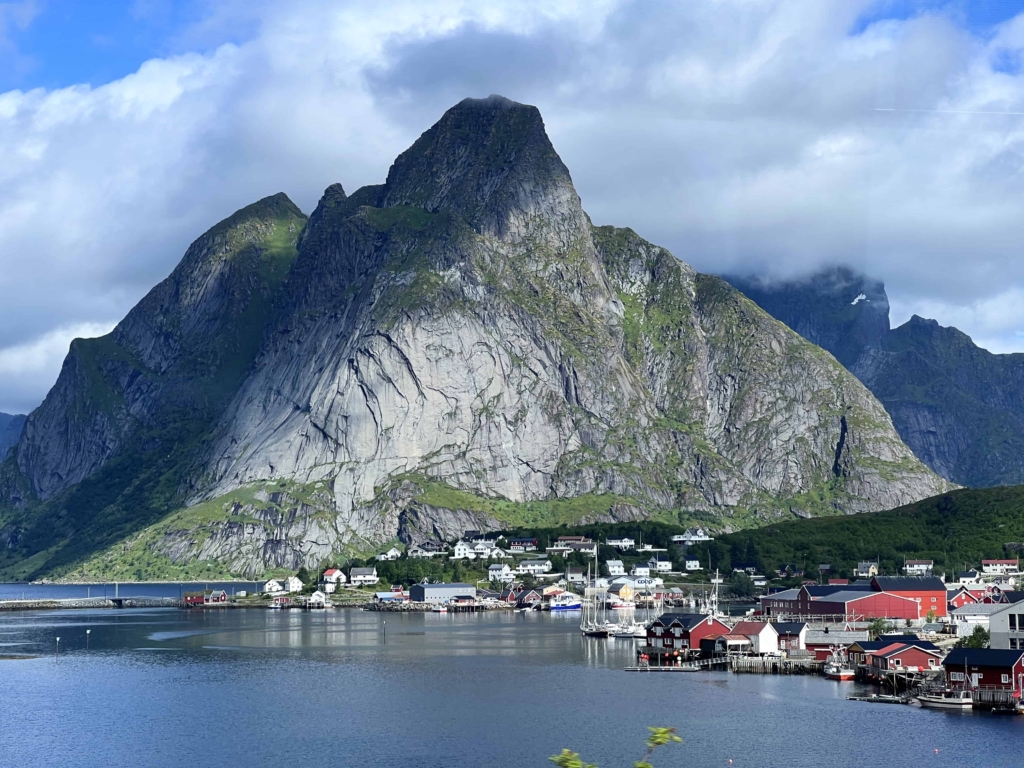
How to get to the Lofoten Islands?
The most scenic and eco-friendly way to get to the Lofoten Islands is using public transport. Train connections from across Europe can take you to Norway. From Trondheim in Norway, take the 10 hour overnight or day train to Bodø. Bodø is well-connected to the Lofoten Islands by a public ferry.
How much does the ferry between Bodo and Lofoten Islands cost?
The ferry from Bodø to Moskenes, the most popular island in the Lofoten Islands, costs 260 NOK (roughly 25$). However, the ferry to the lesser known island of Værøy is free of cost. Updated ferry costs and timetables can be found here.
Where to stay in the Lofoten Islands?
We thoroughly enjoyed our weeklong Airbnb stay on a self-catering island cottage on Vaeroy. Our host went out of his way to pick us up from the ferry terminal, and gave us insider tips that really made us feel part of the local Arctic community.
Traditional accommodations in the Lofoten Islands are called “Rorbuer” – fishing cottages on stilts that were built in traditional Arctic style by the local fishing community. We stayed at Eliassen Rorbeur in Hamnoy on Moskenes Islands, and loved the splurge.
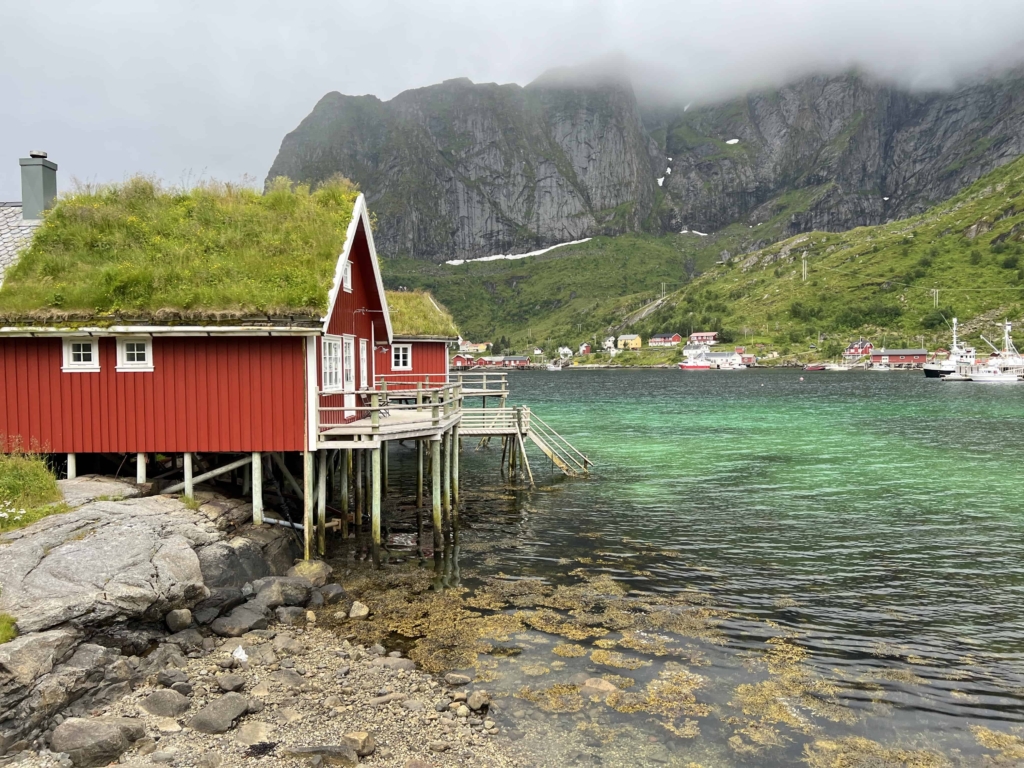
What is the best time to visit Lofoten Islands?
Many people travel in the winter months from October and March, to experience the northern lights on the Lofoten Islands. I’m sure that must be a stunning experience, but also bitterly cold!
We loved experiencing the long summer days and the midnight sun on the Lofoten Islands. The best time for these is July and August.
How many days do you need in the Lofoten?
The more the better 😉 Travelling in the Arctic, especially the remote Lofoten Islands, can be expensive though. Plan for a week atleast, and more if you can afford it.
Can you experience the night sky?
Of course! Visiting in the summer is a bit like cheating, because people who live in the Lofoten Islands have to experience the harsh Arctic cold, with 24 hours of darkness, during the winter months.
What’s a recommended itinerary for the Lofoten Islands?
We spent nearly a week on Værøy, and a night on the way back in the popular village of Reine, on the island of Moskenes. If you enjoy cycling, hiking, local culture and quietude, I highly recommend spending more of your time on Vaeroy, with a day or two in Moskenes since the ferry passes through there anyway.

Do you dream of travelling to remote places like the Lofoten Islands in the Arctic? Would you go on adventure to get there without flying?
*Thanks to Airbnb and Eurail for supporting this adventure!
Hi there! I’m Shivya, and I started this travel blog back in 2011, when travel wasn’t trendy, Instagram didn’t exist and AI wasn’t a thing (simpler times, I know!). I write about slow, meaningful and conscious travel – that is good for us, the places we visit, the people we meet along the way, and the planet at large. Settle down, grab a cup of tea, and read stories that remind you of the essence of travel. I’m so glad you found me!

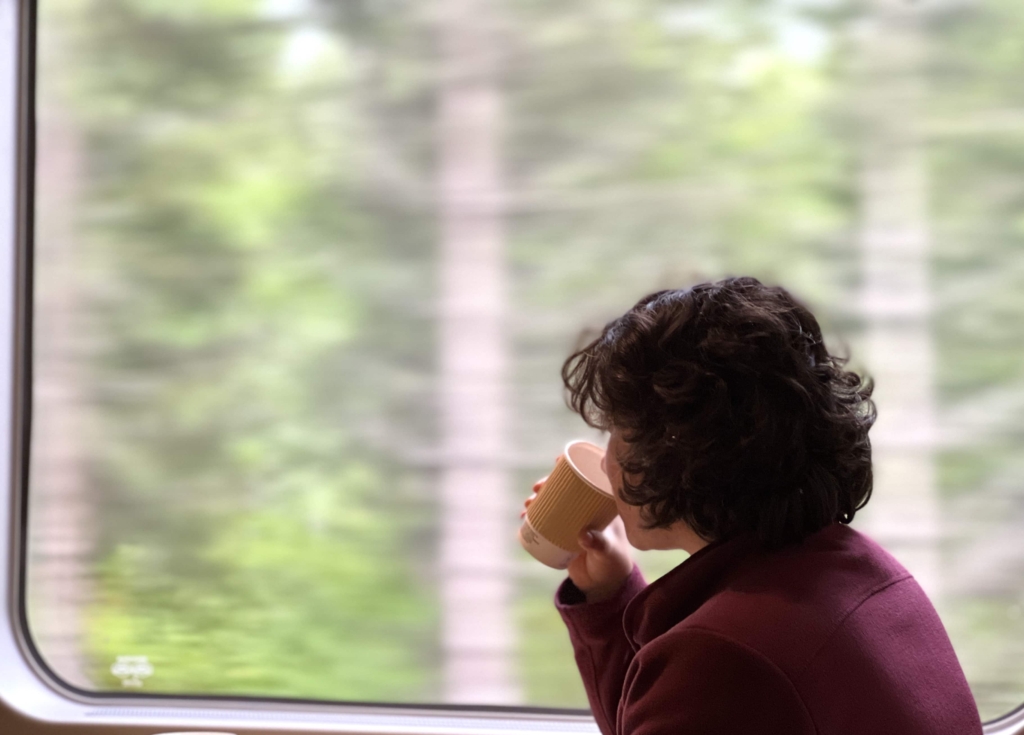

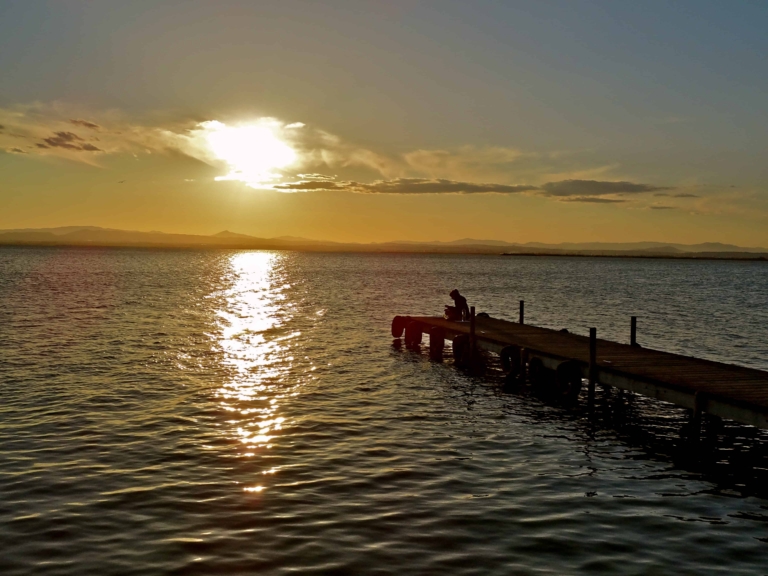
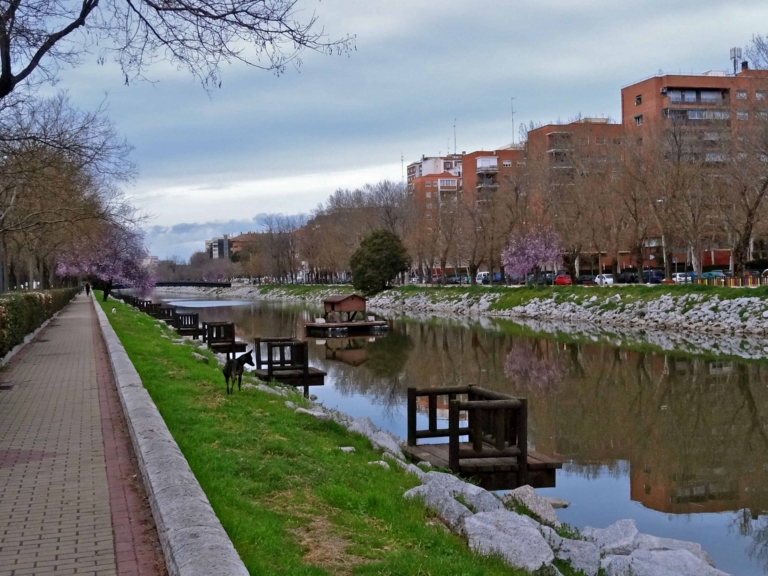
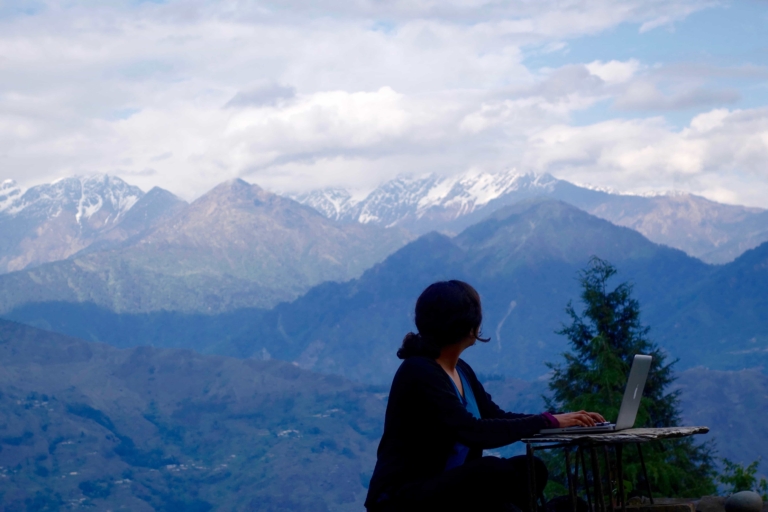
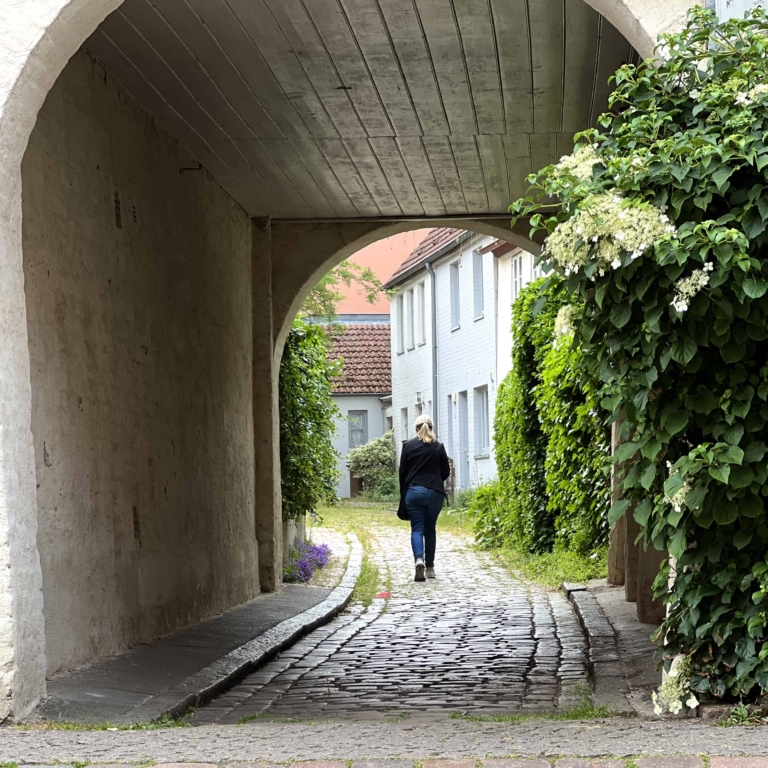
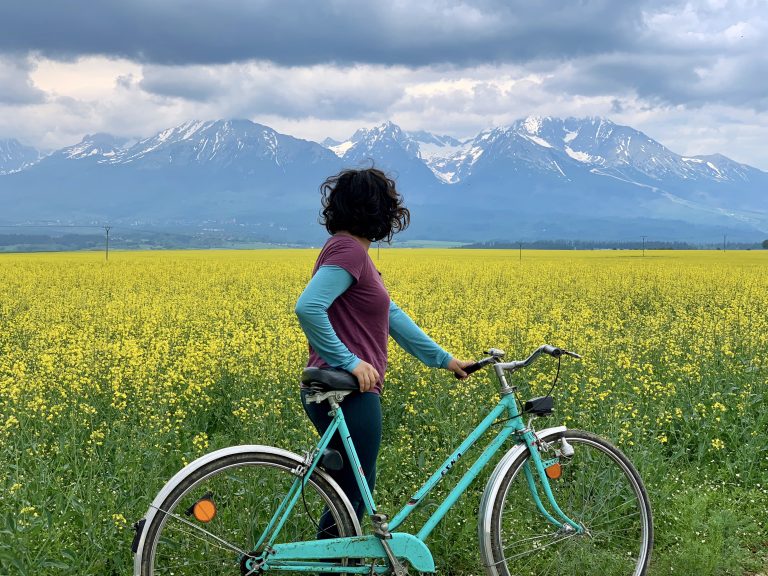
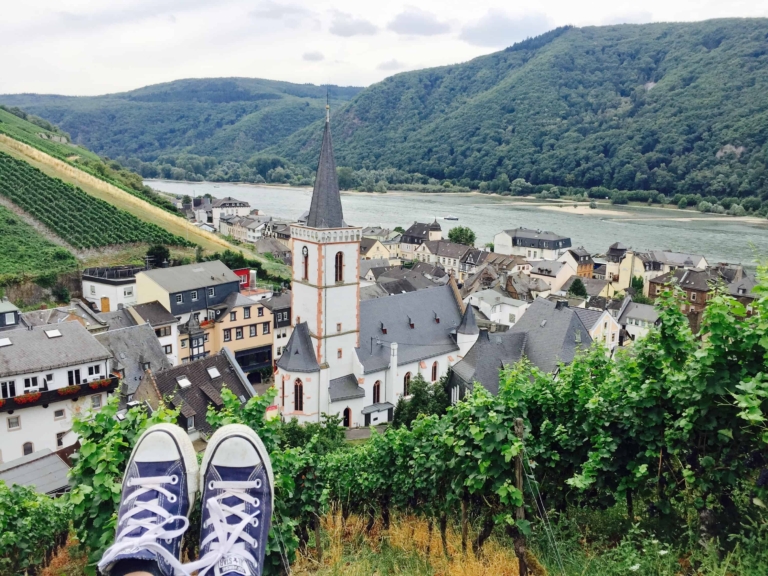
Happy reading about this destination. Also read an account by Bill Bryson in one of his books. He also used public transport. Not sure if I want to go to the Arctic or the Antarctic! Too cold for my comfort!
That’s amazing, will look up that book! Haha, cold it is. Even in the middle of summer, I was wearing all my layers. Imagine living there in winter!
Wow your photo of the cabin and the island and the grass and water is stunning! The colours are so vibrant. Looks like a gorgeous place to visit and restore oneself 🙂
It’s definitely a special place – and the photos do little justice!
What a lovely post!
Thanks for reading!
Well, couldn’t help but notice your hair in the above clicks! your hair doesn’t seem to bear any brunt of travel. Could you pls give some info about hair management(colour, styling etc) during travel including whether these practices are in sync with sustainable travel?
Haha! I just use a natural, zero waste shampoo (from Nature Masons), and a hair serum to tame my otherwise wild and curly hair 😉
You inspire me as always. Just wow feeling after reading this article.
A “wow” place for sure!
Beautifully written 🙂 It is so wonderful to be able to read this and imagine these faraway places on this planet! Your writing always motivates me to practice more environmentally conscious living! Cheers Shivya 🙂
Aashi, so glad you could armchair travel to this beautiful part of the planet – and also find inspiration to live consciously!
In recent years, the Lofoten Islands have become increasingly commercialized. There are more and more buildings that devastate the amazing views.
Sad reality of “development” everywhere. It seems it’s only the more mainstream islands that are this way though.